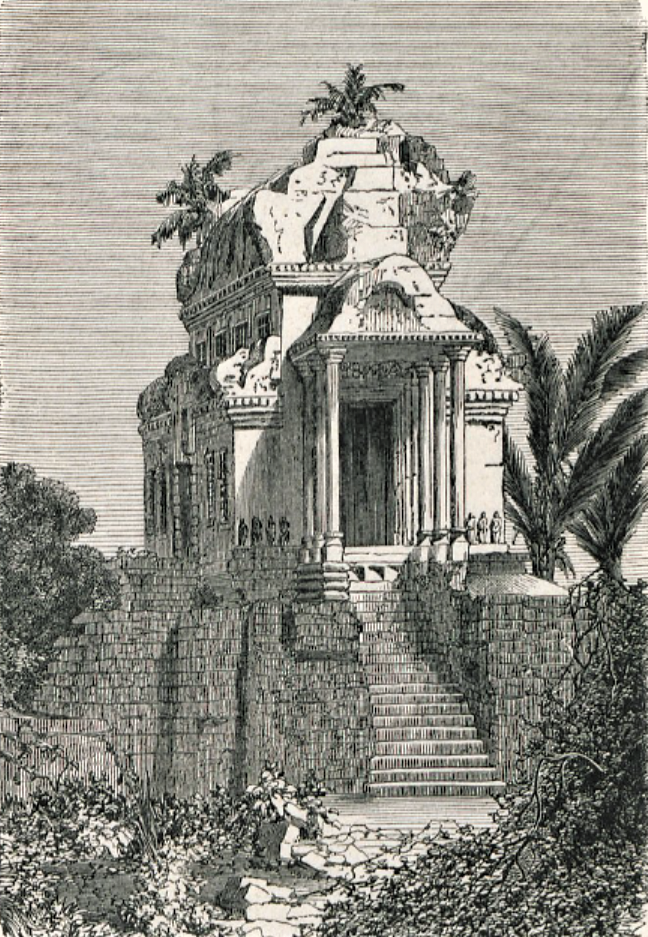Voyage dans les Royaumes de Siam, de Cambodge et de Laos
by Henri Mouhot
Including the famous relation of the January 1860 visit to Angkor site, this edition drew from Mouhot's Diary and previous publications.in English and French.
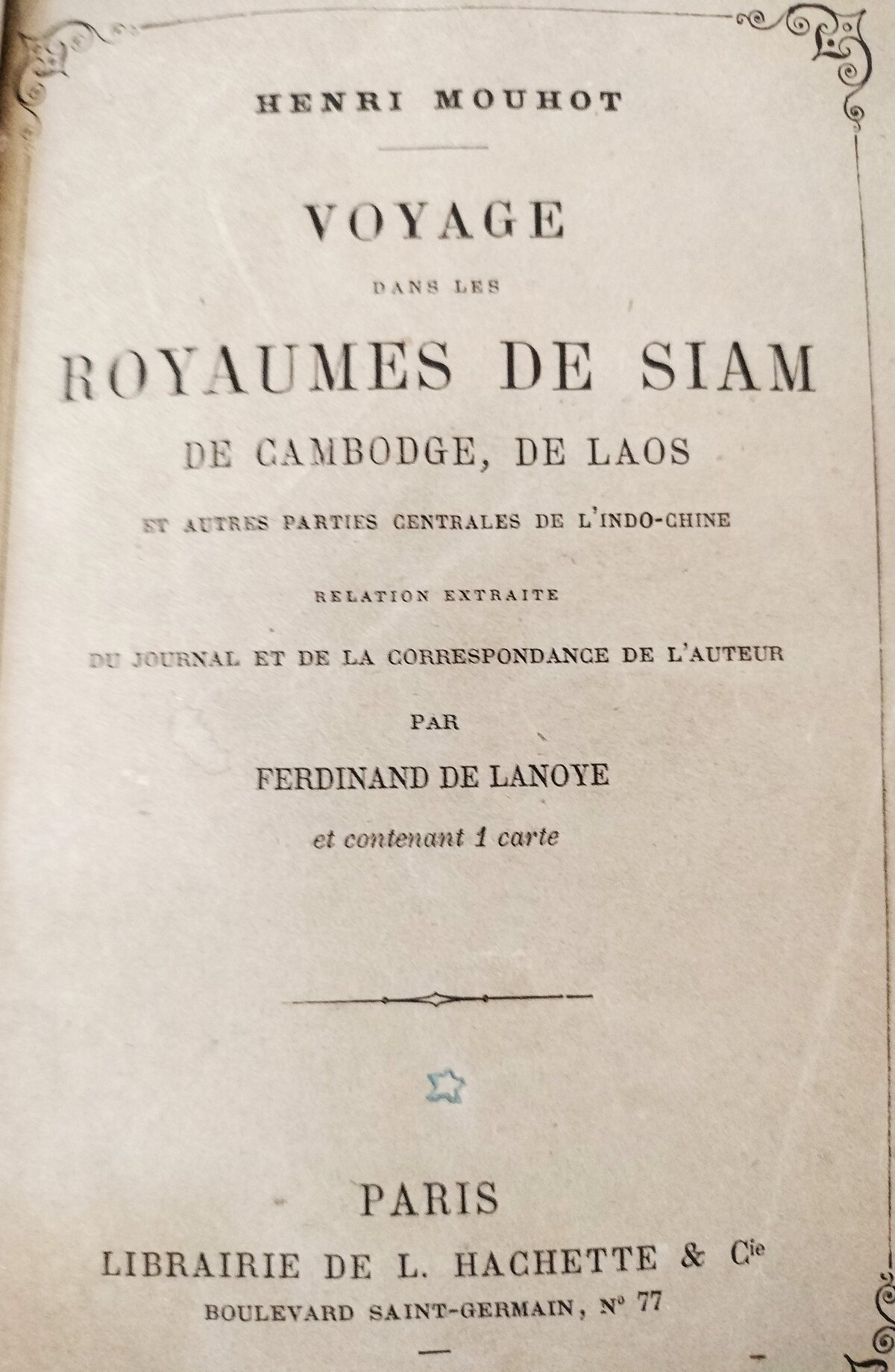
Type: hardback
Publisher: Librairie Hachette Paris. Edited and annoted by Ferdinand de Lanoye.
Edition: First Edition.
Published: 1868
Author: Henri Mouhot
Pages: 331
Language : French
ADB Library Catalog ID: TRA-MOU1
This is an edited version by Ferdinand de Lanoye of Henri Mouhot’s Travels, previously published in Great Britain (and in English) by his brother Charles, and in the Paris magazine Le Tour du Monde in French.
Henri Mouhot’s description of Angkor in the year 1860 — Chapters XVIII, XIX and XX (pp 186 – 221) of this book — is concise, informative and a pleasure to read. His further speculations about the origins of the Khmer people seem certainly outdated, yet some of his notations, such as the fact that the natives in Angkor area viewed the Eastern ethnic populations (Stieng, Moi, Tampuan, Khmer Leu, etc…) as “eldest brothers”, are definitely important.
A self-taught botanist and photographer, Henri Mouhot traveled four times from Bangkok across the Kingdoms of Siam, Cambodia and Lao. Not being a trader, nor a military man, and without any other support than some backing from two scientific Societies in London, he was indeed a “free agent”, and the precursor of the modern wanderlust traveler.
This status led to long-lasting polemics around his writings, some critics arguing that he was promoting colonialist expansionism (he was not) or tried to steal from others the title of “Angkor rediscoverer” (he did not).
It must be noted that the French edition is less exhaustive than the English one, established and published 4 years earlier by Henri Mouhot´s brother, Charles Mouhot, and does not include the many illustrations produced from Henri Mouhot´s sketches and photographs.
- As it often occured often in Mouhot’s times, Angkor can be spelled “Ongkor”, “Nokhor” or “Angcor”.
- Editions in English: Mouhot, Henri, Travels in Siam, Cambodia and Laos 1858 – 1860, London, John Murray, 1864, 2 vols, edited and translated by Charles Mouhot. Reprinted Bangkok, White Lotus, 1986; reprinted Singapore, Oxford University Press, 1989 and 1992.
- Read a documented biography of Henri Mouhot by Dawn F. Rooney here.
- A map of the Mekong River Basin by Mouhot was added to the first French edition:
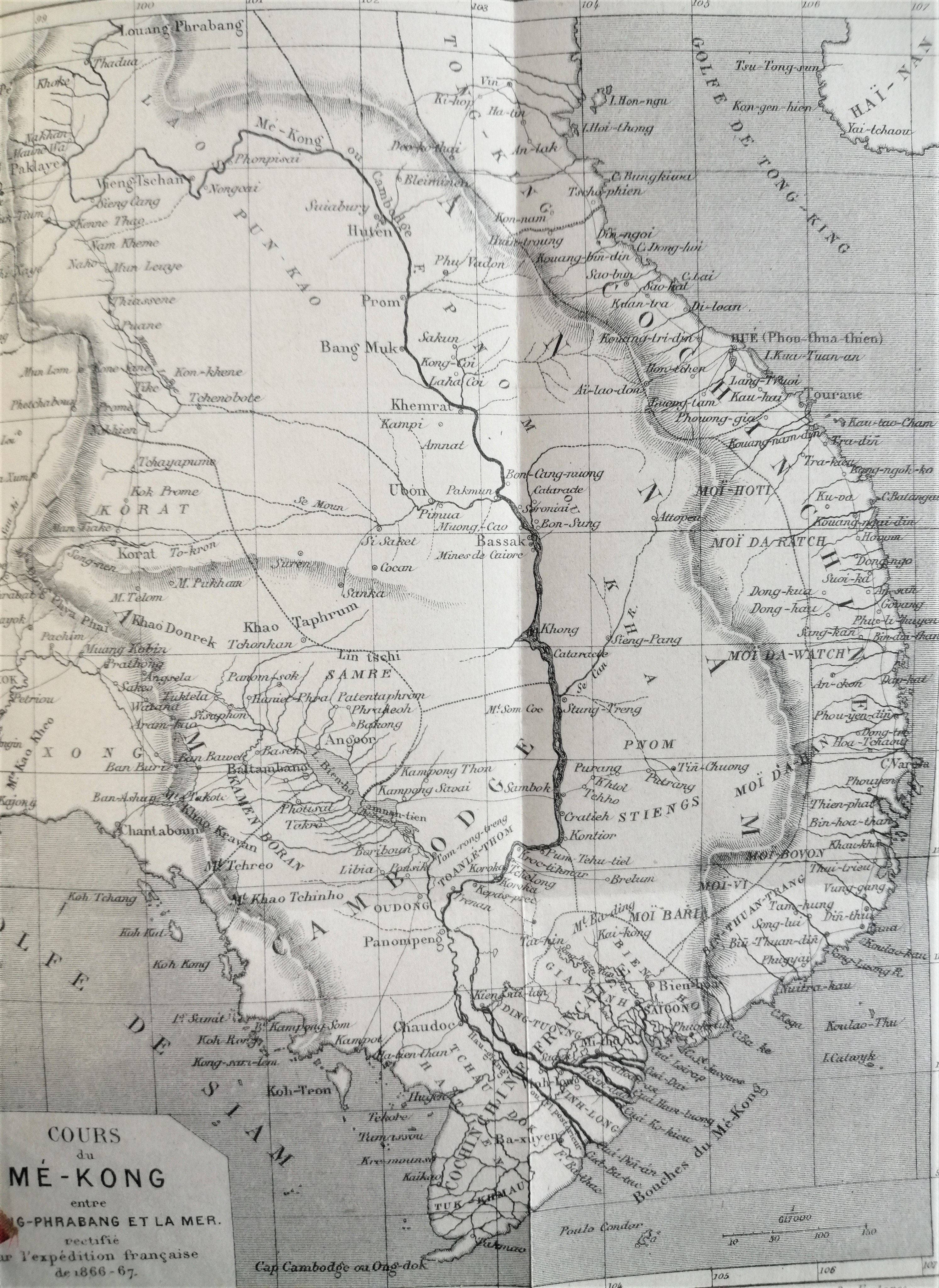
(Photo AngkorDatabase)
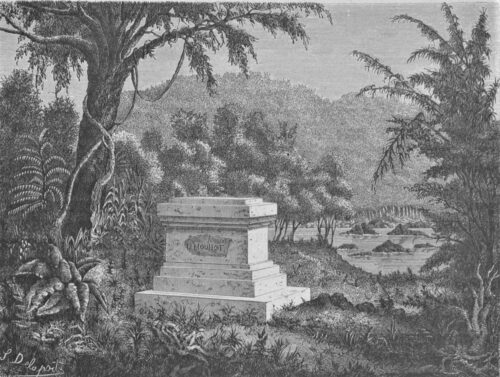
Henri Mouhot’s grave near Luang Prabang as seen by L. Delaporte
Tags: French explorers, 19th century, travelogue, philology, epigraphy
About the Author
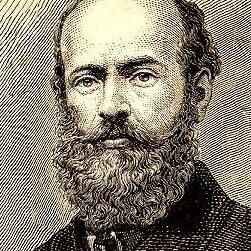
Henri Mouhot
Philologist, self-taught photographer and naturalist Henri Alexandre Mouhot (15 May 1826, Montbeliard, France ‑10 Nov. 1861, Naphan, Laos) started exploring South East Asia in 1857 with the support of the Royal Geographical Society and the Zoological Society of London. French authorities never supported his journeys aimed at natural sciences research.
Mouhot´s connection with Great Britain was also personal since he married in 1856 the granddaughter (or niece?) of famous Scottish explorer Mungo Park (1771−1806), Annette Park (18??, Berwick-on-Tweed — 1894), and lived with her in Jersey. His brother Charles, who traveled with him across Europe and Russia, married another of Park´s relative, Jane Elizabeth Mary Park.
Also, it has been said that John Bowring´s book published in 1857, The Kingdom and People of Siam, gave him the idea of visiting South East India. Last but not least, his travelogue around South East Asia was first published in London in an edition collated by Charles Mouhot in 1862.
His Journal and letters, later collated in the book Voyage dans les Royaumes de Siam, de Cambodge et de Laos (1868) for the French public, became a sensation for his description of Angkor, which he reached from the South in January 1860 (chapters 18, 19, 20). If he was not the first Westerner to access the Angkorian site, his relation was so vivid, detailed and well-written that ït gave him (posthumously) the reputation of being the first “Angkor rediscoverer”. [in 1874, Hachette Publishers included Mouhot’s book in its popular “Pink Library”, 3d series (“For teenagers, possibly in a library for young girls aged 14 to 18 years).]
Henri Mouhot, was had studied Greek and Latin and taught Greek at a Saint-Petersburg gymnasium during the twelve years he stayed in Russia, took some epigraphic notes on Khmer and Lao languages that are kept at the British Library (collection Or.4736) and can be viewed here. They are parts of Mouhot’s documents and notes which were brought to London by Dr. James Campbell and given to his widow, Anne Mouhot. She gave these papers to the British Museum in 1894, over 30 years after her husband’s death, and the originally loose-leaf papers (most of them dated 1860 and 1861) were recently bound together in book form by the British Museum.
Henri Mouhot died of malaria fever (called “fievre des bois” among the French explorers of Indochina) on Nov 10, 1861, in the vicinity of Luang Prabang, the southernmost Royal city of Laos. His grave, erected in 1867, has been rediscovered in 1989.
According to American Protestant missionary Daniel McGilvary, who visited the area in 1876 – 1877 (in A Half Century Among the Siamese and The Lao, An Autobiography, Fleming H. Revell Company, New York, 1912), “no doubt the real spirits are the malarial germs or the poisonous gas which later we found to be the chief danger of the Chieng Dāo cave. It was in this cave that M. Mouhot, a noted French scientist, contracted the fever from which he died. The natives believed that his death was caused by his rashness in trespassing upon the domain of the spirits who preside over the cave.”
As a naturalist in Laos, Mouhot is credited of numerous discoveries of numerous specimens of insects and shells that were not previously known to Western zoologists, including an impressive black beetle that was later named Mouhotia gloriosa, and an extraordinarily shaped spider now known as Cyphagogus Mouhotii.


